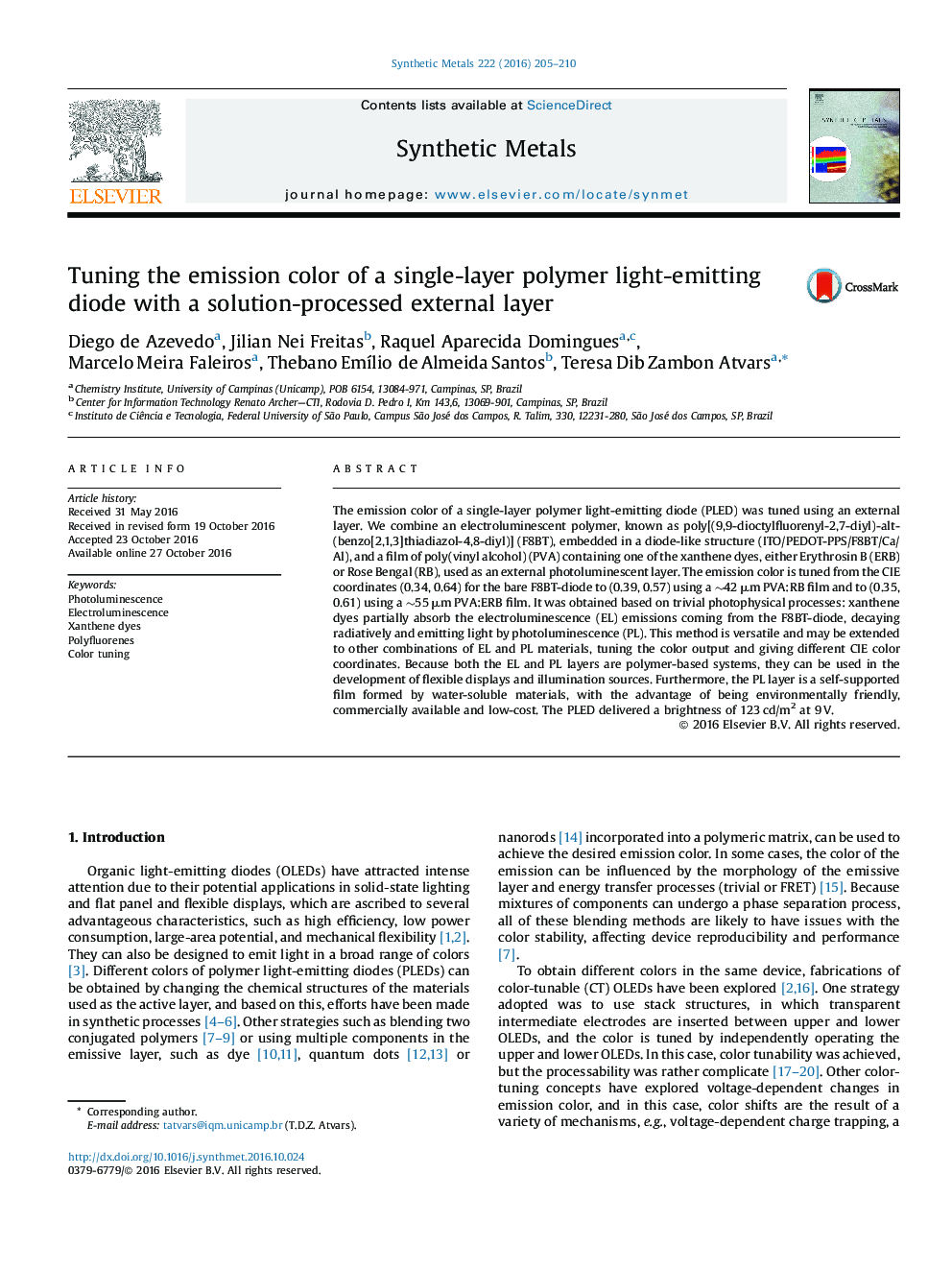| کد مقاله | کد نشریه | سال انتشار | مقاله انگلیسی | نسخه تمام متن |
|---|---|---|---|---|
| 5435508 | 1398112 | 2016 | 6 صفحه PDF | دانلود رایگان |
- Use of an external layer to tune the emission color of a single-layer polymer.
- A stronger color tuning effect was obtained for the F8BT-diode/dye external layer using the PVA:RB.
- As-cast plastic films have the advantage of being environmentally friendly and easily processed.
The emission color of a single-layer polymer light-emitting diode (PLED) was tuned using an external layer. We combine an electroluminescent polymer, known as poly[(9,9-dioctylfluorenyl-2,7-diyl)-alt-(benzo[2,1,3]thiadiazol-4,8-diyl)] (F8BT), embedded in a diode-like structure (ITO/PEDOT-PPS/F8BT/Ca/Al), and a film of poly(vinyl alcohol) (PVA) containing one of the xanthene dyes, either Erythrosin B (ERB) or Rose Bengal (RB), used as an external photoluminescent layer. The emission color is tuned from the CIE coordinates (0.34, 0.64) for the bare F8BT-diode to (0.39, 0.57) using a â¼42 μm PVA:RB film and to (0.35, 0.61) using a â¼55 μm PVA:ERB film. It was obtained based on trivial photophysical processes: xanthene dyes partially absorb the electroluminescence (EL) emissions coming from the F8BT-diode, decaying radiatively and emitting light by photoluminescence (PL). This method is versatile and may be extended to other combinations of EL and PL materials, tuning the color output and giving different CIE color coordinates. Because both the EL and PL layers are polymer-based systems, they can be used in the development of flexible displays and illumination sources. Furthermore, the PL layer is a self-supported film formed by water-soluble materials, with the advantage of being environmentally friendly, commercially available and low-cost. The PLED delivered a brightness of 123 cd/m2 at 9 V.
120
Journal: Synthetic Metals - Volume 222, Part B, December 2016, Pages 205-210
